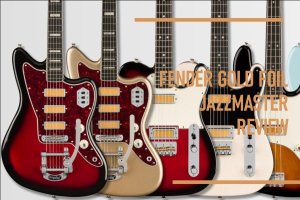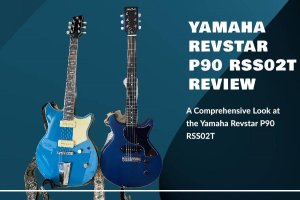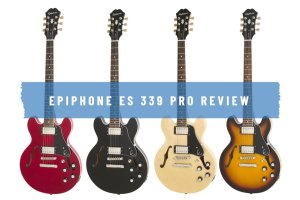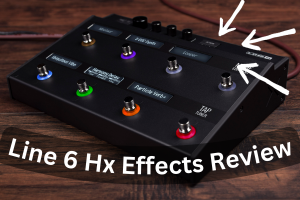Fender’s Jaguar and Jazzmaster are iconic electric guitars. While not as well known as the Stratocaster and Telecaster, the Jaguar and Jazzmaster have a unique reputation: Jazz musicians for the Jazzmaster and surf rockers for the Jaguar. Both guitars initially failed to hit their target initially but found unexpected popularity in alternative music.
Both guitars were innovative in the late 1950s and early 1960s. Among the features, design has made them stand out in the Fender lineup and popular with players seeking something different from the norm.
This post will give you a complete look at these two amazing models side by side.
Design Philosophy and Historical Context

The Fender Jazzmaster, which came out in 1958, was made with professional jazz musicians in mind. Leo Fender wanted to make a guitar that jazz musicians who were used to playing hollow-bodied guitars could play with more comfort and a wider range of tones. The Jazzmaster had a unique body shape that was offset from the center. This made it easier to balance and play comfortably, especially when sitting down, which is common in jazz performances. Its wide, flat-coil pickups were made to give it a warm, rich tone that could compete with the acoustic resonance of a jazz ensemble. This made it different from the Telecaster and Stratocaster, which have brighter tones.
The Fender Jaguar was made for surf musicians, like the growing surf rock scene on the West Coast, when it came out in 1962. The Jaguar’s shorter 24-inch scale length made it easier to bend the strings and made playing faster, which was advertised as being good for the quick, snappy licks that are common in surf music. Its complicated control system, which included separate pickup switches and a special bass-cut “strangle” switch, let you get a lot of different sounds, which fit with the experimental style of the music. The Jaguar looked like it belonged in the space-age era of the early 1960s. It had chrome plating and a more sculpted body to make it look better and feel better.

At first, both the Jazzmaster and the Jaguar didn’t appeal to the people they were meant for. Even though the Jazzmaster was made for jazz musicians, it didn’t really appeal to this conservative market, which mostly stuck with traditional hollow-body guitars. Surf rock musicians, on the other hand, liked it a lot in the early 1960s because of its smooth tremolo system and warm sound. In the same way, the Jaguar became popular again in the punk, new wave, and alternative rock scenes of the late 1970s and early 1980s after being popular in the surf scene. The low prices of these models in used stores during these times made them appealing to musicians in these growing musical scenes.
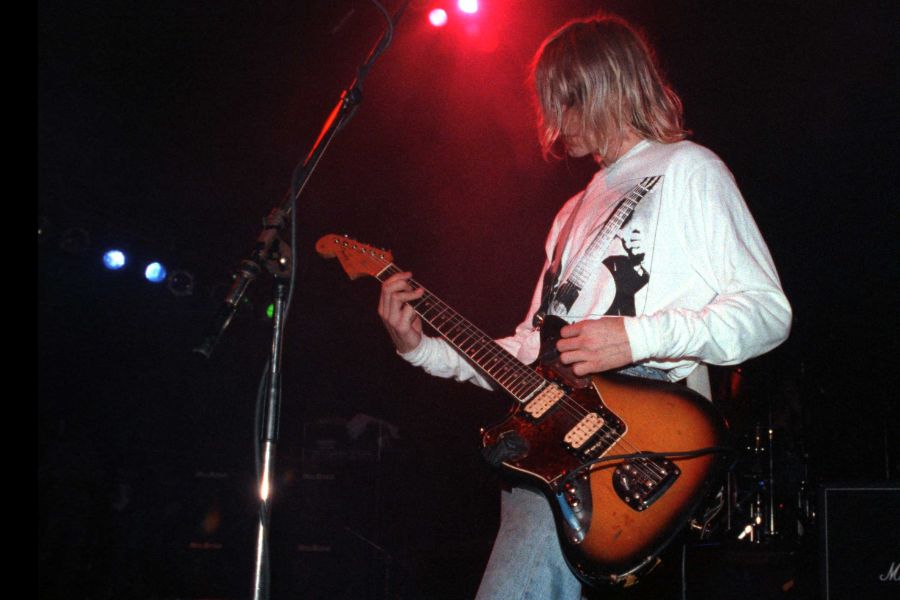
Both guitars experienced declines in popularity. The Jaguar stopped being made in 1975, and the Jazzmaster also stopped being made because people were not as interested in them. But in the late 1980s and early 1990s, both models became popular again thanks to popular indie and alternative musicians taking them on. Their unique sounds and retro appeal fit with the ideas behind these alternative music movements, which is what made this revival stand out. Some artists, like Kurt Cobain of Nirvana and Kevin Shields of My Bloody Valentine, brought these guitars back into play.
Because of the renewed interest, Fender brought these models back, but they were changed in some ways to fit modern playing styles while keeping their vintage look.
Technical Specifications and Playability
Physical Attributes
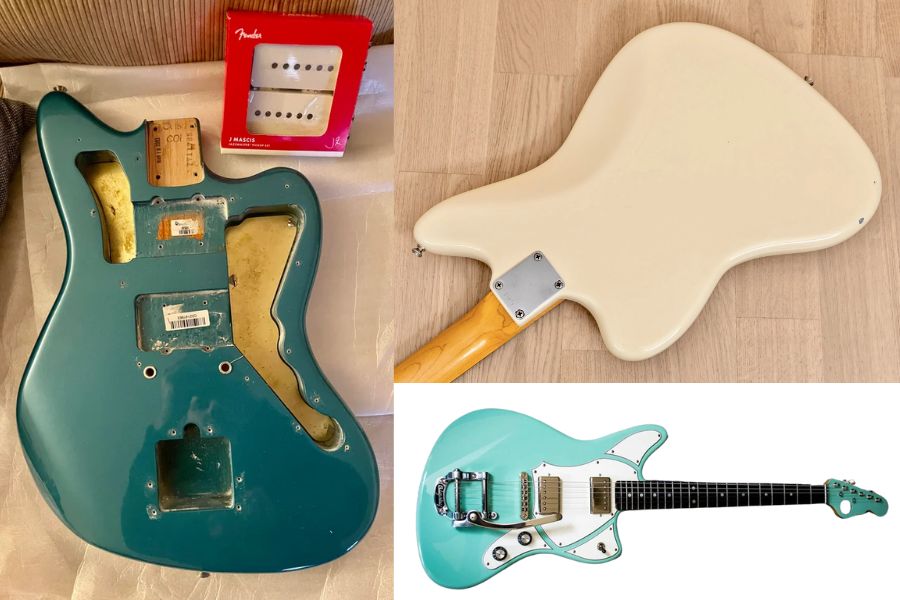
Body Shape and Ergonomics
The Fender Jazzmaster and Jaguar both have the iconic offset body shape, which is meant to make them more comfortable and easy to use, especially when playing while sitting down. The top of the waist moves forward a little and the bottom moves back. This makes it easier to balance on the player’s lap. Not only does the offset design make it look unique, but it also makes it easier to reach the upper frets than with more traditional shapes.
Scale Length Differences
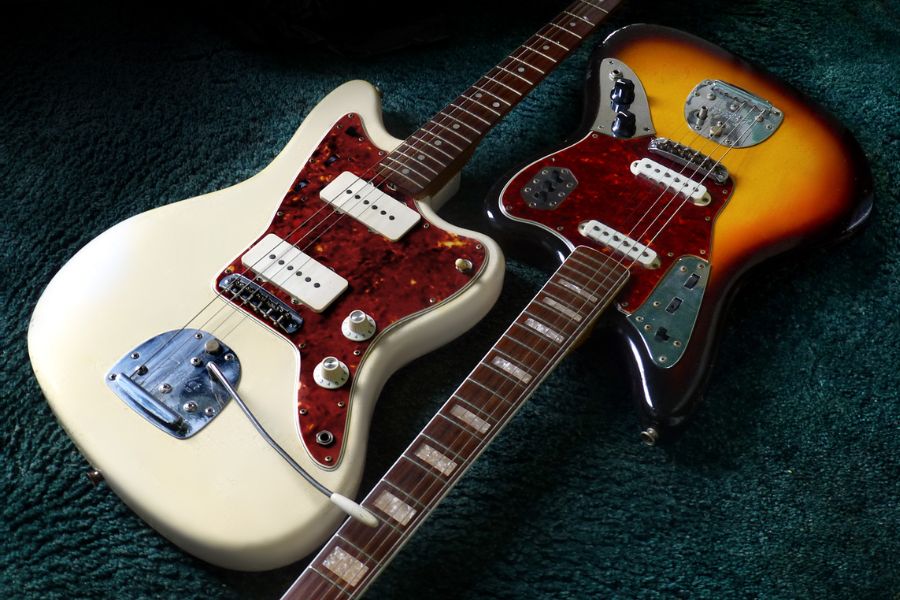
The standard length of a Fender scale is 25.5 inches, which gives the Jazzmaster a familiar feel and tension like the Stratocaster and Telecaster. This longer scale length makes the response faster and the tone brighter, which is good for the wide range of dynamics needed in jazz, surf, and modern alternative music.
Because its scale length is only 24 inches, the Jaguar is different from its Fender siblings. This shorter scale lowers the tension in the strings, which makes it easier to bend notes and gives the guitar a slinkier feel. This makes it perfect for fast playing styles and complex lead work like in surf and punk music. The smaller scale can also change the overall tone, making the Jaguar sound a little warmer and fuller.
Fretboard and Frets
The Jazzmaster usually has 21 frets, which is a feature of many old Fender models. This gives you a lot of options for playing styles that are more traditional while keeping a classic look.
Jaguar guitars usually have 22 frets, which gives you a little more range and helps with styles that need long solos and playing in higher registers. The extra fret can also change the distance between the frets, making the scale a little shorter, which works well for fast lead passages and complex chord shapes.
Pickup Configuration and Electronics
Pickup configuration
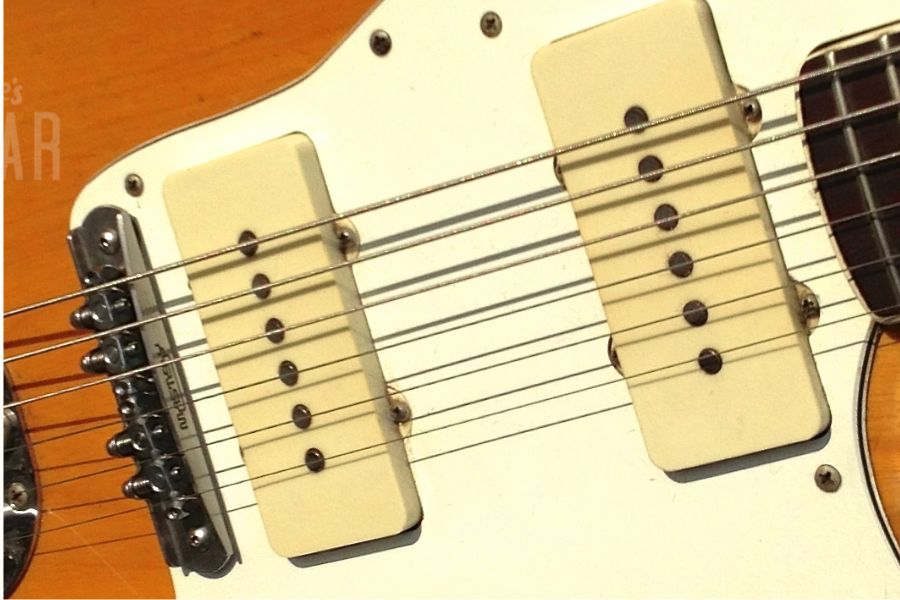
Jazzmaster pickups have a full, warm sound that is very different from the more common single-coil pickups found in Stratocasters. They are known for having a wide, flat-coil design. The output of these pickups is very smooth, making them great for making clean, shimmering chords and lush, atmospheric sounds.
The Jaguar has single-coil pickups that are built around a core that is similar to Stratocaster pickups, but they have metal “claws” that stop electromagnetic interference. This change to the design makes the sound sharper and clearer, so it can cut through a dense mix better. In general, the tone is brighter and sharper than the Jazzmaster’s.
Switching Systems
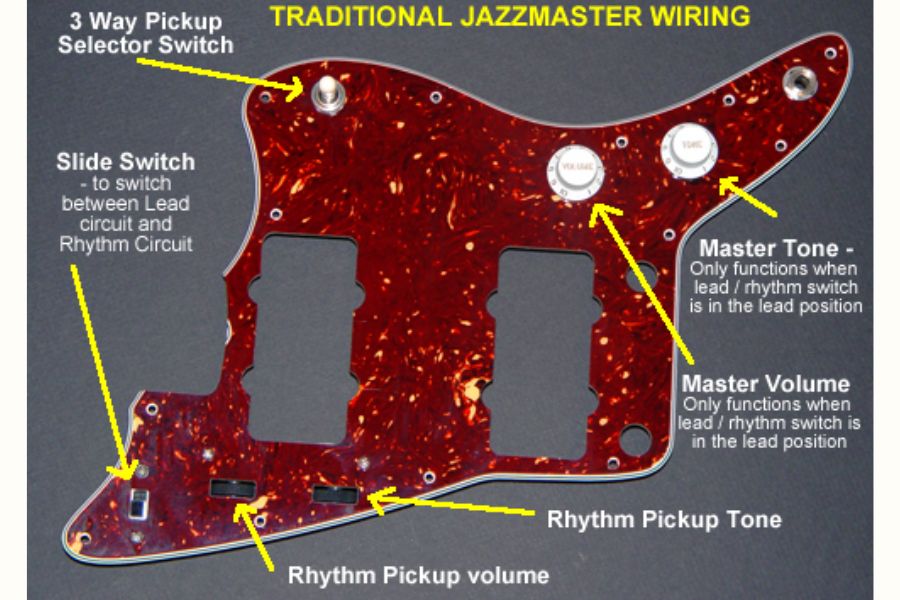
The Jazzmaster has two circuits: a “lead” circuit with a standard three-way toggle switch and a “rhythm” circuit that is activated by a separate switch and has its own volume and tone rollers for a darker tone that is already set. With this setup, you can quickly switch from bright and lively lead tones to deeper and smoother rhythm settings.
Jaguar also uses a dual-circuit system, but theirs is more complicated and can be changed in various ways. In addition to the lead and rhythm circuits, it has separate switches for each pickup and a “strangle” switch that cuts out lower frequencies to make the tone even sharper. Many options give you a flexible way to try out different sound textures, which makes the Jaguar very useful in both studio and live settings.
Sound Characteristics and Musical Application
We’re talking about the Jazzmaster’s full, lush sounds and the Jaguar’s sharp, bright ones.
Jazzmaster
The Jazzmaster’s unique wide, flat-coil pickups are made to give you a warm, rich tone with a full sound that lasts a long time. In addition, the guitar’s longer scale length makes the tone clearer and more resonant, which makes it better at making clean, shimmering chords and smooth leads. The Jazzmaster’s floating tremolo system lets you add subtle vibrato effects without changing the tuning, which is important for keeping the rich sounds that are typical of the styles it is often associated with.
Guitars with a large dynamic range and atmospheric sound are perfect for styles like shoegaze, dream pop, and indie rock that value ethereal, reverberant textures.
Traditionally, the Jazzmaster didn’t fit in with jazz musicians as planned. Instead, its smooth tone and stable tremolo system made it popular with surf rock musicians. As music evolved, it became an important part of the alternative and indie rock scenes. For these styles, the Jazzmaster’s pickups can handle both clean and slightly overdriven tones well.
Jaguar
The Jaguar has a bright and punchy tone that comes from its shorter scale length and unique pickup configuration, which includes metal claws that block electromagnetic interference. Even though the Jaguar’s pickups are still single coils, they are made to be more focused and sharp. With the “strangle” switch added to the Jaguar, low frequencies are cut to make the tone even brighter. The aggressive and cutting sound of the guitar makes it stand out in a mix.
The Jaguar was first popular in the surf music scene in the early 1960s because it had a unique sound and was easy to play for fast, complex styles. It later became a symbol of the punk and post-punk movements.
The Jaguar’s brighter and more aggressive tone makes it a favorite in punk, surf rock, and some types of alternative rock that need clear articulation and a cutting presence. Its sound works well with fast, jagged rhythms and staccato leads, which need to be clear and stand out.
Pushing Boundaries: Modern musicians not only follow the rules of their genre, but they also push the limits by playing guitars in ways that aren’t typical. For example, you might find the Jazzmaster being used in more aggressive and high-gain settings, a domain typically reserved for guitars like the Jaguar. On the other hand, the Jaguar is being used in jazz and experimental music, where its unique range of tones can open up new creative possibilities.
Modern Variants and Customizations
Fender keeps adding new reissues and special editions to the Jazzmaster and Jaguar to keep up with modern musicians’ needs.
Jazzmaster

Recent models like the Fender American Professional II Jazzmaster introduce refinements such as the new V-Mod II pickups, which offer more clarity and tonal versatility. The model also features a Panorama tremolo system that allows for a wider palette of vibrato effects.
The American Original and Vintera series recreate vintage specifications with modern playability, offering choices between traditional and modernized fret sizes, neck shapes, and more color options.
Many Jazzmaster players switch the original pickups with aftermarket options, common swaps include P90s or even humbuckers in a Jazzmaster casing.
Jaguar
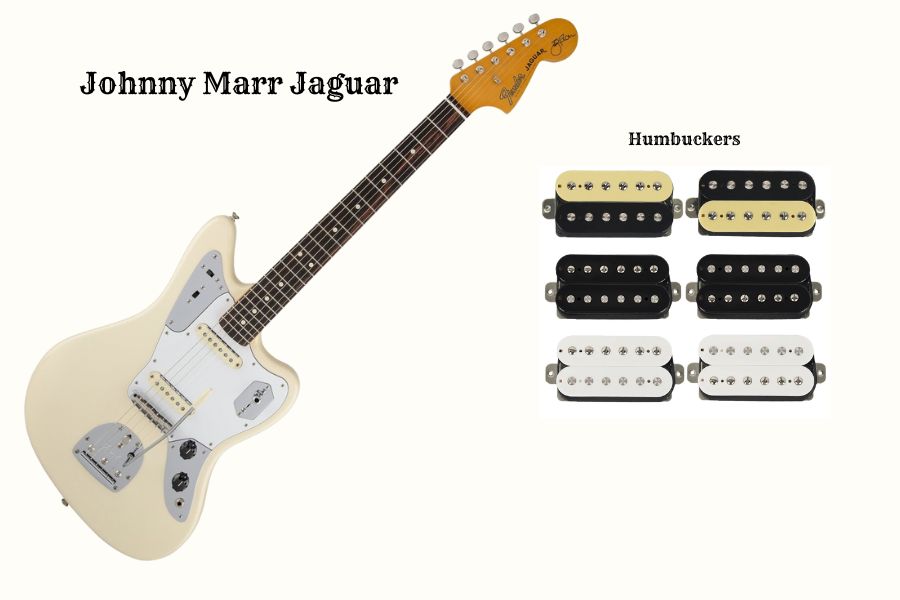
The Fender Player Jaguar is an update on the classic model. It has humbucking pickups that make it better for players who need more power for styles other than surf and rock.
Some special editions, like the Johnny Marr Jaguar, change the switching system to make it easier to use and add a four-position blade switch that follows Marr’s instructions for making his own sound.
Jaguar fans often change their pickups to custom single-coils or hot rails to make the guitar sound even more aggressive for heavy music.
Electronics Customization
Getting rid of the stock bridge is one of the most common changes made to both models. Many players choose Mustang or mastery bridges to make their guitars more stable, stop the strings from slipping, and improve the overall tone.
Advanced players often change how the rhythm and lead circuits are wired, adding things like coil-splitting to Jaguar models to make the sounds more varied.
By changing the values of the capacitors or the whole wiring scheme, the player can make the instruments respond differently to different types of touch.



